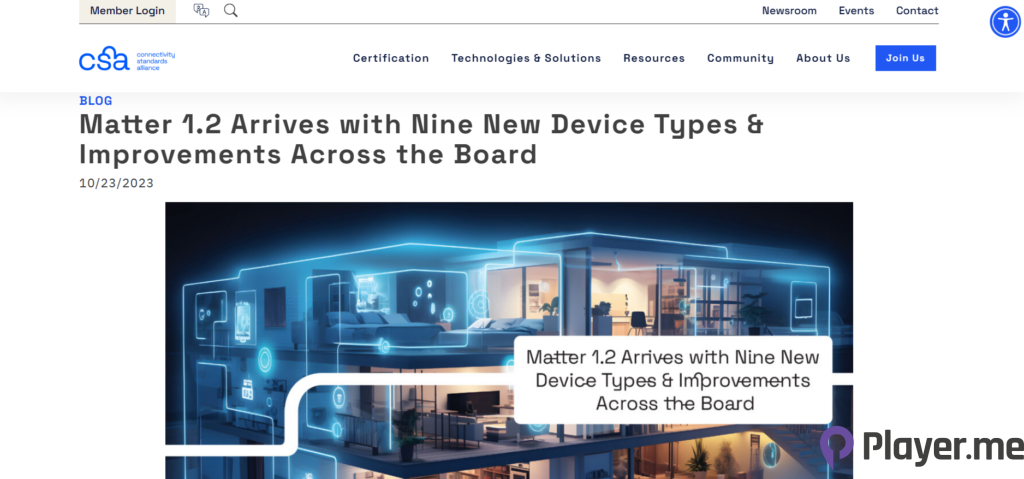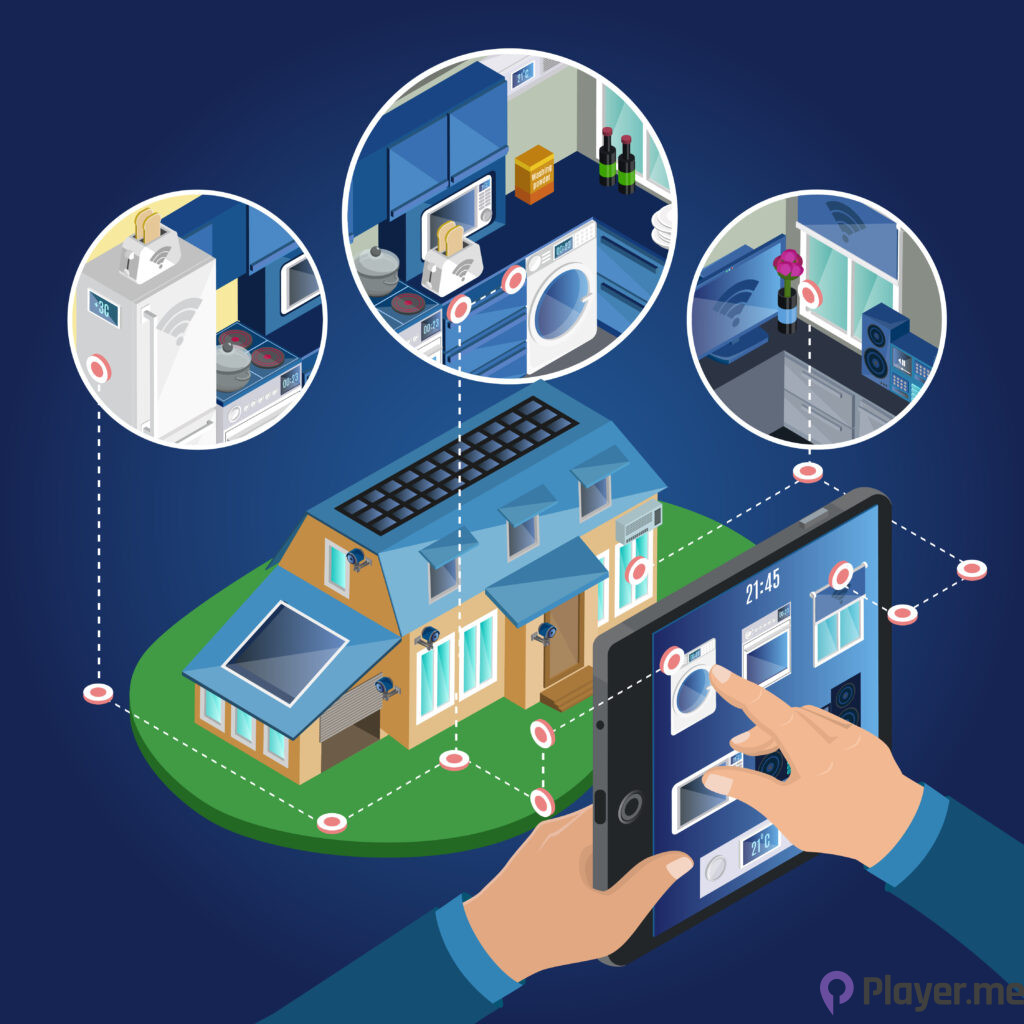The smart home landscape is evolving at a rapid pace in the technology industry, and Matter 1.2 is here to propel us into a more connected and seamless future. Matter, the IoT connectivity standard, is on a mission to revolutionise the way our gadgets communicate with each other, and its latest update, Matter 1.2, marks a significant milestone in achieving this vision.
Expanding the Horizons of Smart Home
Matter 1.2 has brought a breath of fresh air to the smart home standard, adding support for nine new types of connected devices. This expansion takes us beyond the realm of door locks and light bulbs and into the world of large appliances. Robot vacuums, refrigerators, washing machines, dishwashers, smoke alarms, air quality sensors, air purifiers, room air conditioners, and fans are now part of the Matter ecosystem. This is a giant leap towards creating a complete smart home, with the potential to enhance our daily lives in ways we couldn’t have imagined.
The Power of Integration
The Connectivity Standards Alliance (CSA), the driving force behind Matter, released the Matter 1.2 specification a year after launching Matter 1.0. This commitment to regular updates demonstrates the CSA’s dedication to staying at the forefront of smart home technology.

With Matter 1.2, appliance manufacturers can now incorporate Matter support into their devices, while smart home ecosystems like Apple Home, Amazon Alexa, Google Home, and Samsung SmartThings can begin supporting these new device types. The evolution of smart home devices has come so far to make our daily lives much more convenient.
Imagine the convenience of controlling a robot vacuum in the Apple Home app or monitoring the temperature of your fridge, dishwasher, or washing machine from a single platform. Matter 1.2 makes this a reality. It simplifies basic functions like starting or stopping appliances and provides essential notifications, such as smoke detection or the status of your laundry.
For robot vacuums, the support is robust, offering remote start, progress notifications, various cleaning modes, and alerts for brush status, errors, and charging. While mapping isn’t included, the convenience and automation possibilities are vast.
Also Read: The Circular Electronics Initiative: A Step Towards Global Environmental Conservation
Solving Silos in the Smart Home
One of the key challenges in the current smart home landscape is the fragmentation caused by individual manufacturers’ apps. Most smart appliances offer a range of functions, but these functions are typically locked within each manufacturer’s proprietary app.
Matter 1.2 breaks down these silos and enables users to connect their devices to their preferred smart home platform, unlocking exciting automation options.
Whether it’s coordinating your lights to flash when your laundry is done or turning a light red when your fridge’s temperature rises, Matter makes it easier to implement these commands seamlessly across different ecosystems, especially for the elderlies as they need more time and effort to understand such advance technology.
Setting up such automations today can be complex, requiring multiple apps, sensor purchases, and dealing with unreliable cloud integrations. Matter simplifies this process, creating a more user-friendly experience. Smart technology are not just made for successful business building, but also making our lives easier and more convenient.
Manufacturers on Board
Matter’s success depends on the support and implementation by appliance manufacturers. Companies like Whirlpool, Panasonic, LG, Haier (Owner of GE Appliances), and more are part of the Matter ecosystem, with the potential for broad implementation across home appliances.
Manufacturers are excited about the possibilities, and Whirlpool, for instance, plans to implement Matter across all its connected products in its brands, which include Whirlpool, KitchenAid, and Maytag. While the timeline for implementation isn’t always clear, the commitment to Matter is promising.
Also Read: Nobo Auto Concept Car Is the Astonishing 1-Button Transformer Car in Real Life
Challenges and Competition
However, Matter does face challenges. Not all smart home ecosystems have immediately embraced the new device types introduced in Matter 1.2. While Amazon, Google, and others have plans to add support over time, the adoption process may take a while. This poses a potential hurdle to the seamless integration of Matter into existing smart home ecosystems.

Moreover, Matter faces competition from organisations like the Home Connectivity Alliance (HCA), which focuses on keeping devices within proprietary ecosystems and maintaining cloud connections. Some manufacturers prefer this approach as it offers more control and data funnelling.
Looking Ahead
Matter 1.2 is a significant step towards achieving a complete and interconnected smart home. It addresses many of the silos and integration challenges that have plagued the smart home landscape. With support from major appliance manufacturers, the potential for Matter is enormous. As Matter continues to evolve, we can anticipate even more device types and features in the future. While challenges exist, the promise of a truly smart and interconnected home is within reach, and Matter 1.2 is leading the way.
Frequently Asked Questions
What Is Matter 1.2, and Why Is It Significant for the Smart Home Industry?
Matter 1.2 is the latest update to the Matter standard, an IoT connectivity standard designed to create a more interconnected and seamless smart home experience. It expands the range of supported devices to include large appliances like refrigerators and washing machines, making it possible for users to control and monitor these devices through their preferred smart home platforms. This update is significant for the smart home industry because it addresses the issue of fragmentation and offers the potential for a more unified and user-friendly smart home ecosystem.
What Are the Key Additions in Matter 1.2 in Terms of Device Support?
Matter 1.2 introduces support for nine new types of connected devices, including robot vacuums, refrigerators, washing machines, dishwashers, smoke alarms, air quality sensors, air purifiers, room air conditioners, and fans. These additions expand the scope of Matter from smaller categories like door locks and light bulbs to larger appliances. It provides users with greater control and automation possibilities for a wider range of household devices, enhancing the functionality and convenience of their smart homes.
Are There Any Competitors to Matter in the Smart Home Connectivity Space, and How Do They Differ?
Yes, Matter faces competition from organisations like the Home Connectivity Alliance (HCA). While Matter aims for interoperability and connection between various ecosystems, the HCA focuses on keeping devices within proprietary ecosystems and maintaining cloud connections. This means that HCA emphasises more control and data funnelling within a manufacturer’s ecosystem, whereas Matter’s goal is to create a more open and interconnected smart home environment.
Author Profile
Latest entries
 GAMING2024.06.12Top 4 Female Tekken 8 Fighters to Obliterate Your Opponents in Style!
GAMING2024.06.12Top 4 Female Tekken 8 Fighters to Obliterate Your Opponents in Style! NEWS2024.03.18Elon Musk’s SpaceX Ventures into National Security to Empower Spy Satellite Network for U.S.
NEWS2024.03.18Elon Musk’s SpaceX Ventures into National Security to Empower Spy Satellite Network for U.S. GAMING2024.03.17PS Plus: 7 New Games for March and Beyond
GAMING2024.03.17PS Plus: 7 New Games for March and Beyond GAMING2024.03.17Last Epoch Necromancer Builds: All You Need To Know About It
GAMING2024.03.17Last Epoch Necromancer Builds: All You Need To Know About It





